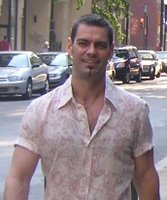The first HIV cure?
CCR5 is a protein on the surface of our cells; HIV uses it to gain entry into the white blood cells that it attacks. Eventually it kills off enough of these immune cells that the immune system collapses.
Some people have a mutation that causes CCR5 to not be produced. If you inherit this mutation from both parents, your cells will have no CCR5, and such individuals are highly resistant to HIV infection. A significant number of people of European descent (especially Northern European descent) have the mutation.
Since the blood marrow donor had the mutation from both of his parents, the patient's newly constituted immune system was resistant to HIV and may have cleared the virus from his body. It's been undetectable without any antiretroviral treatment for 600 days.
A new drug, Selzentry (maraviroc), is on the market and works by blocking CCR5 on the body's cells, denying HIV entry into those cells. I just wrote a paper for my statistics class about one of the maraviroc trials. The drug looks to be a promising addition to the arsenal of treatments that can hold HIV at bay.
This particular patient's history, however, suggests a more permanent approach. Rather than using a bone marrow transplant, doctors may be able to eliminate HIV from a patient with gene therapy. There's still a long road ahead, but given the difficulty in creating a vaccine, this is a promising discovery.





0 Comments:
Post a Comment
<< Home